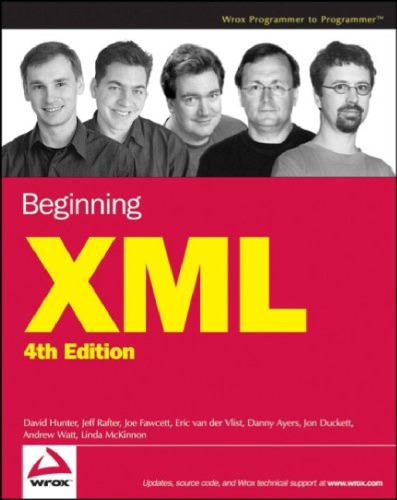

Most ebook files are in PDF format, so you can easily read them using various software such as Foxit Reader or directly on the Google Chrome browser.
Some ebook files are released by publishers in other formats such as .awz, .mobi, .epub, .fb2, etc. You may need to install specific software to read these formats on mobile/PC, such as Calibre.
Please read the tutorial at this link. https://ebooknice.com/page/post?id=faq
We offer FREE conversion to the popular formats you request; however, this may take some time. Therefore, right after payment, please email us, and we will try to provide the service as quickly as possible.
For some exceptional file formats or broken links (if any), please refrain from opening any disputes. Instead, email us first, and we will try to assist within a maximum of 6 hours.
EbookNice Team

Status:
Available0.0
0 reviews
ISBN 10: 0470114878
ISBN 13: 9781118169353
Author: David Hunter, Andrew Watt, Jeff Rafter, Jon Duckett, Danny Ayers, Nicholas Chase, Joe Fawcett, Tom Gaven, Bill Patterson
What is this book about?
Beginning XML, 3rd Edition, like the first two editions, begins with a broad overview of the technology and then focuses on specific facets of the various specifications for the reader. This book teaches you all you need to know about XML: what it is, how it works, what technologies surround it, and how it can best be used in a variety of situations, from simple data transfer to using XML in your Web pages. It builds on the strengths of the first and second editions, and provides new material to reflect the changes in the XML landscape — notably RSS and SVG.
Part I: Introduction.
Chapter 1: What Is XML?
Chapter 2: Well-Formed XML.
Chapter 3: XML Namespaces.
Part II: Validation.
Chapter 4: Document Type Definitions.
Chapter 5: XML Schemas.
Chapter 6: RELAX NG.
Part III: Processing.
Chapter 7: XPath.
Chapter 8: XSLT.
Part IV: Databases.
Chapter 9: XQuery, the XML Query Language.
Chapter 10: XML and Databases.
Part V: Programming.
Chapter 11: The XML Document Object Model (DOM).
Chapter 12: Simple API for XML (SAX).
Part VI: Communication.
Chapter 13: RSS and Content Syndication.
Chapter 14: Web Services.
Chapter 15: SOAP and WSDL.
Part VII: Display.
Chapter 16: XHTML.
Chapter 17: Cascading Style Sheets (CSS).
Chapter 18: Scalable Vector Graphics (SVG).
Chapter 19: Xforms.
Part VIII: Case Studies.
Chapter 20: Case Study 1: .NET XML Web Services.
Chapter 21: Case Study 2: XML and PHP.
Part IX: Appendixes.
Appendix A: Exercise Solutions.
Appendix B: The XML Document Object Model.
Appendix C: XPath 1.0 Reference.
Appendix D: XSLT 1.0 Reference.
Appendix E: XML Schema Element and Attribute Reference.
Appendix F: Schema Data Types Reference.
xml starts-with example
xml k
m letter xml
question mark xml